Hapag continues to offer exceptional Filipino dishes that seamlessly merge tradition and modernity in a new, elegant home.
Drawing from their culinary backgrounds in progressive Asian cuisines and deep-rooted passion for Filipino cuisine and culture, Hapag chefs and partners Kevin Navoa and Thirdy Dolatre imagined a space where Filipino cuisine could shine. When they were growing up, Filipino food was under-appreciated. Despite that, their upbringing instilled a love for dishes like adobo and sinigang. This spurred them to create a restaurant that celebrated their shared heritage. For them, Hapag is a stage to express their cultural identity through beautifully crafted dishes, blending traditional recipes with contemporary interpretations.
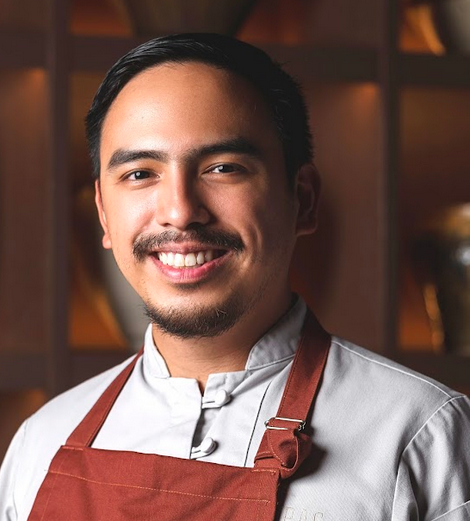
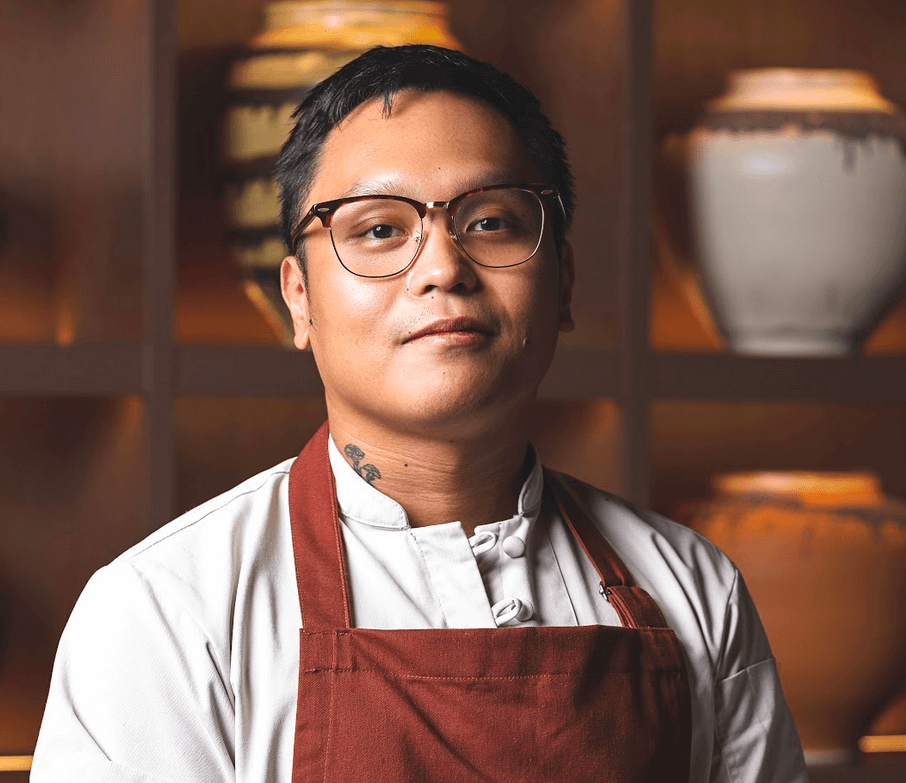

READ ALSO: Sumptuous Tales: Chef Sau del Rosario Brings Stories Of His Culinary Journey To 180° By Chef Sau
Earlier when Hapag was establishing itself, the dining landscape was different. “The restaurant scene wasn’t as alive as it is now. There were only a few progressive restaurants at the time and some fine dining restaurants that did classical cuisine,” shares Navoa.
Few establishments dared to champion Filipino cuisine, leaving a gap that Hapag saw as both an opportunity and a mission. With a profound love for their Filipino culinary heritage, the two talented partner chefs embarked on a journey to celebrate and redefine their cuisine.
Starting as a private dining experience in 2017, Hapag’s founders faced challenges, operating from their homes with only a few guests, if any at all. Yet their dedication remained unwavering as they poured their hearts into each dish, hoping to inspire return visits and spread the word with genuine hospitality. Dolatre says, “Our purpose was very clear: to champion and celebrate Filipino cuisine. All we needed was to introduce Hapag in the right manner.” Slowly but steadily, the restaurant started to gain ground as the community embraced Hapag, leading to its gradual growth and recognition.
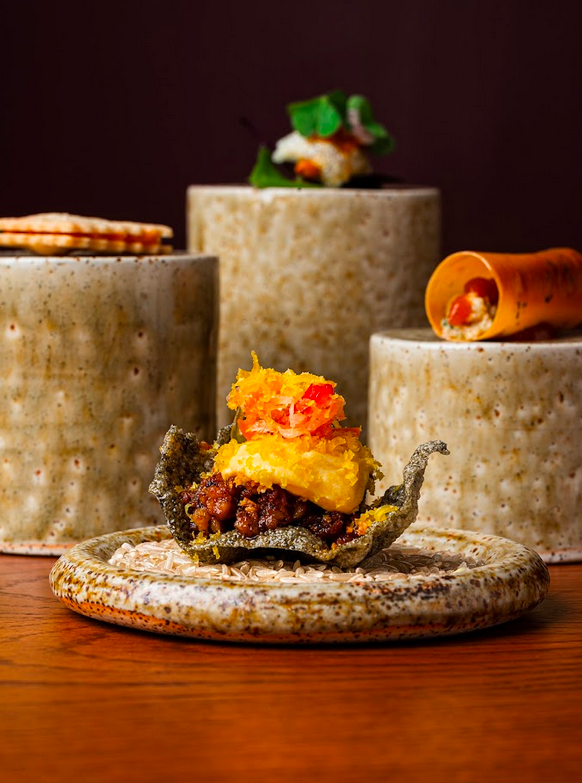
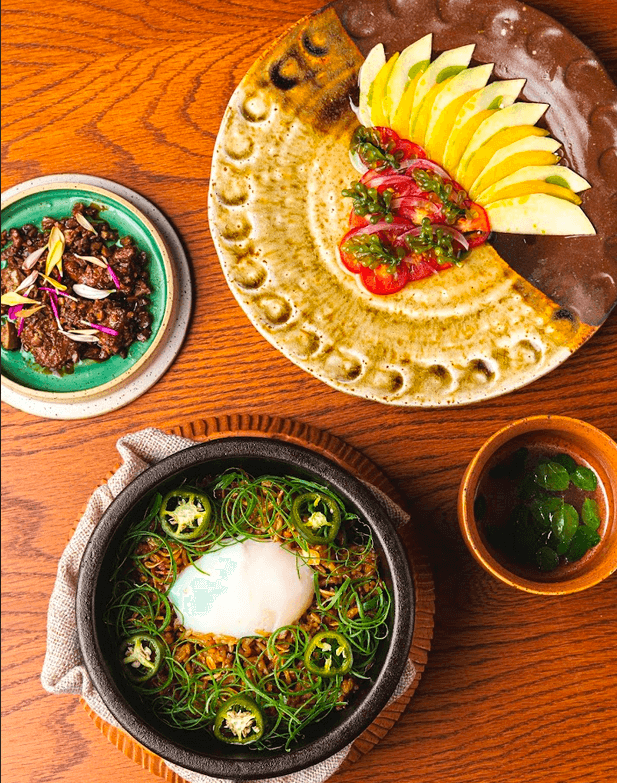
Over the years, Hapag has evolved and matured into a well-crafted establishment, embodying elegance while staying true to its Filipino roots. The evolution of Hapag encompassed all aspects of the dining experience. Navoa mentions, “It’s everything. From the way we approach food, the love for fermentation, the way we do service, the way we lead our teams, the quality of our work, the plates, the uniforms, reservations, the patience, and the resiliency.”
As Hapag moves to their new home at the Balmori Suites in Rockwell, the two chefs are optimistic about the future. Dolatre states, “Hapag may have transformed from a rebellious child to a refined gentleman…but one thing stays true, our dedication to honoring Filipino cuisine and culture will always be at the heart of everything we do.”
Hapag’s menu tells a story. Dolatre continues, “Our menu is progressive and challenges what we all know about Filipino food. It dives deep into our culture. It is carefully planned and precise.” Each dish is a carefully orchestrated symphony of flavors, blending the old with the new in a thought-provoking exploration of taste.
Navoa adds, “The inspiration for Hapag’s cuisine knows no bounds. We find it everywhere.” Inspiration could stem from a cherished childhood memory, a beloved ingredient of the moment, or even a thematic nod to the past.”
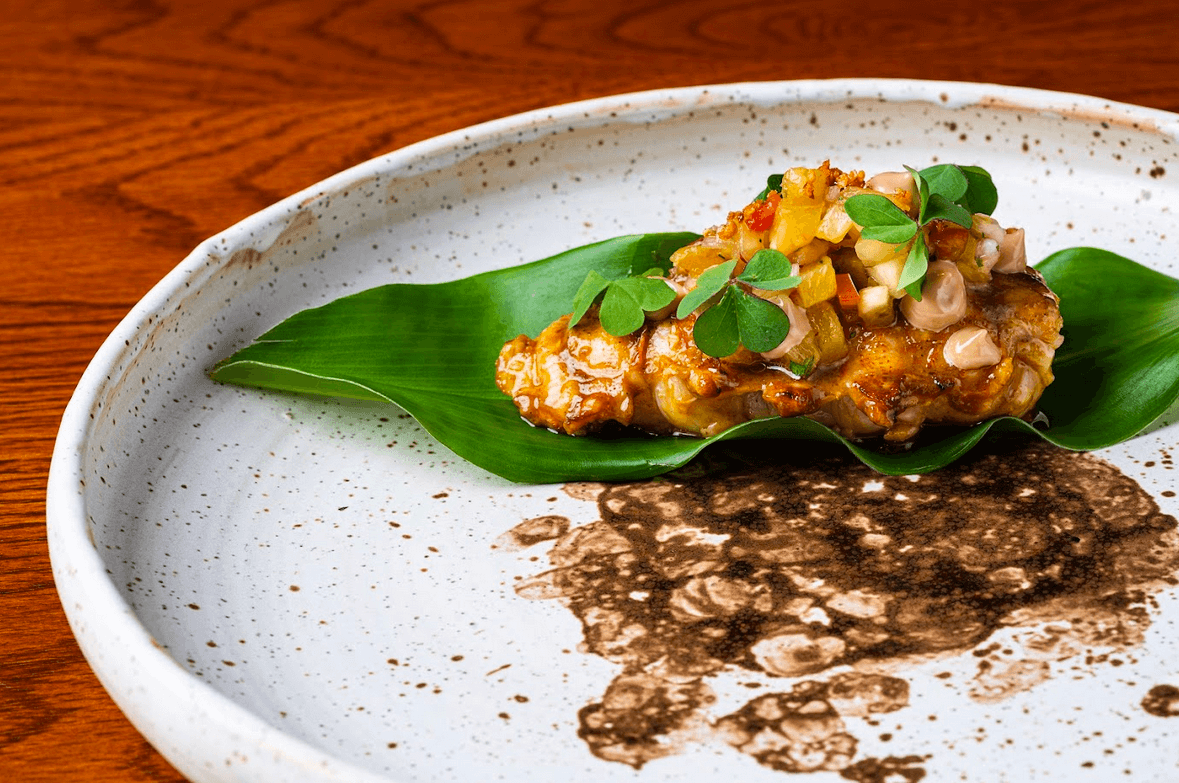
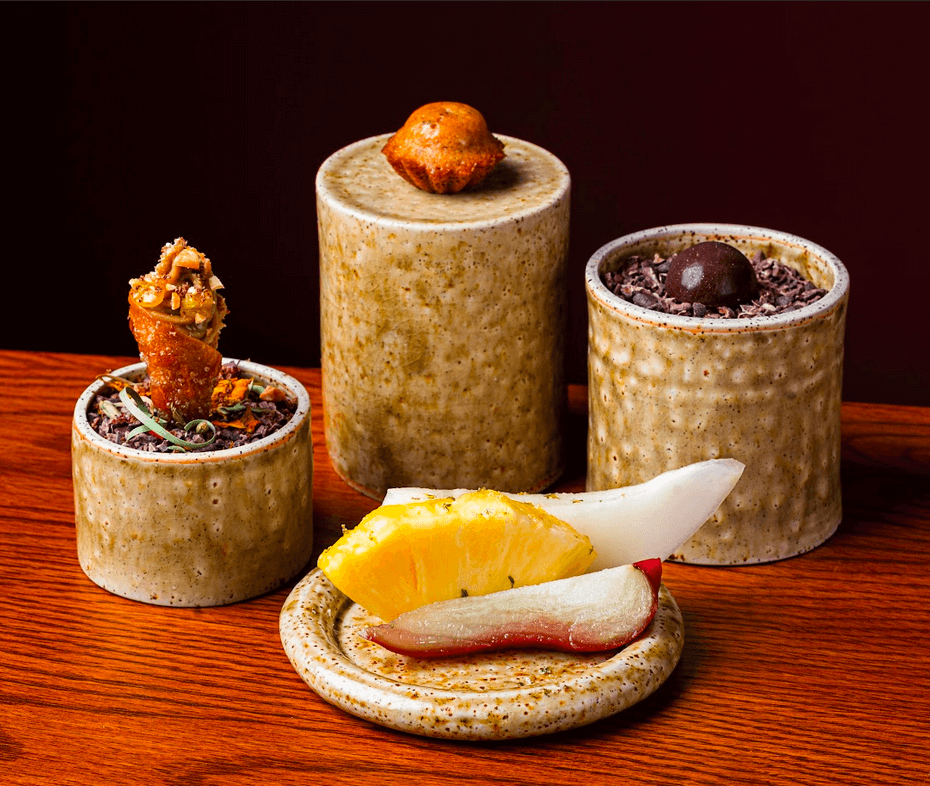

The wine list is as carefully thought of as the menu. Aiming to guide guests toward wines that enhance the flavors of the cuisine. Hapag’s operations manager and sommelier Erin Ganuelas explains, “I was taught that a great wine list should be versatile, with a bottle available for every guest’s preference. This is something we want to achieve here at Hapag.”
Hapag seamlessly merges tradition with modern flair. The interior design, featuring elements like wood parquet floors and adobe walls, serves as a canvas for showcasing modern artworks by local talents. Every aspect of Hapag’s design, from handcrafted vases to indigenous textiles used as upholstery, speaks to the rich tapestry of Filipino heritage.
The restaurant’s design experience was a collaborative endeavor. Ecotecture Design, architect and interior designer of Hapag Liza Morales says, “Our vision for Hapag was to curate an experience that transcends simply dining. It is a journey that immerses guests in the essence of Filipino culture and culinary excellence.” Morales and her team at Ecotecture handled all technical aspects of planning integrating the artistry of design and the science of architecture and are responsible for the Banaue Rice Terraces wall art in the reception area.
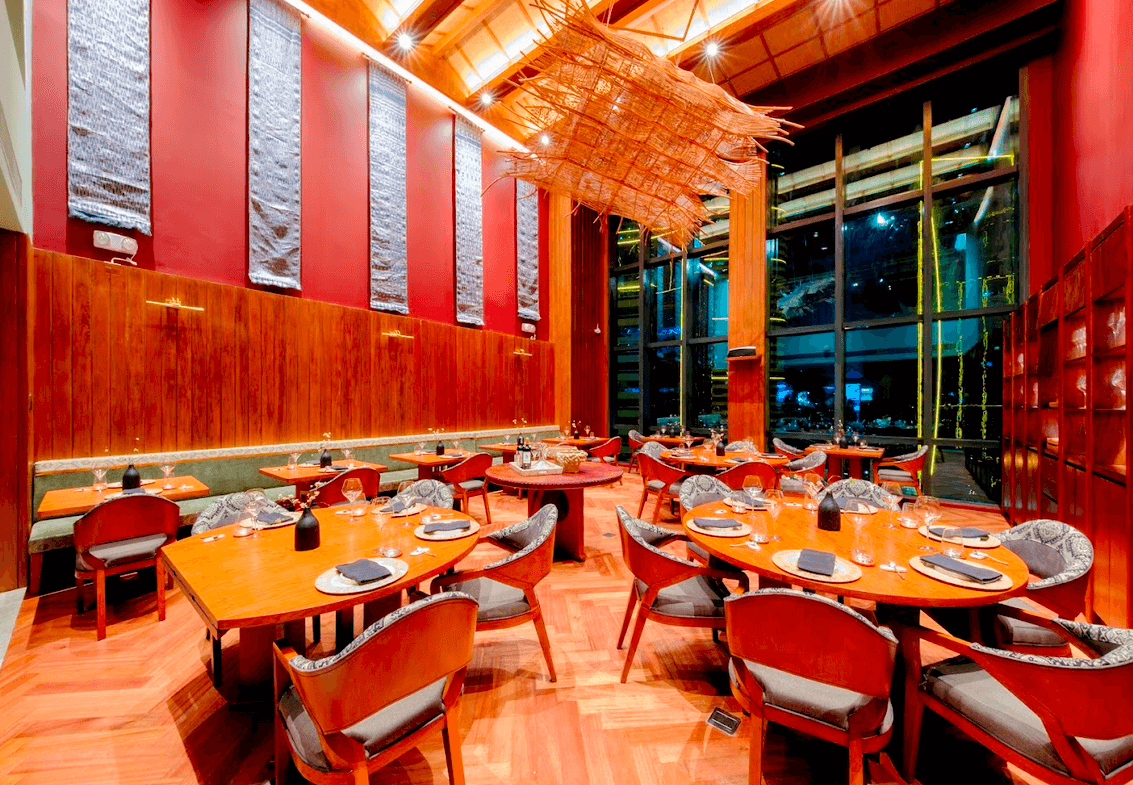
Isabel Lozano and her team from Decorum by MIL focused on the furniture, finishes, and equipment design elements. From the hues of painted walls to fabrics used, Lozano designed custom furniture for Hapag. The focal point of the dining room—a sculptural light installation that draws the eyes upward— was a design collaboration with E. Murio.
Ceramic artist Mia Casal created not only the restaurant’s serving vessels but also the ceramic jars artfully displayed on the fermentation shelf at the reception hall of the restaurant.
The team at Hapag is committed to exploring the diverse flavors and possibilities of Filipino cuisine while honoring its roots—not only in their menu but in the space they have created with every member bringing the dining experience to life each night.
Guests leave Hapag satisfied with fine Filipino dining.
Hapag is located at 7/F Balmori Suites, Rockwell Center, Makati City. For inquiries or reservations, message (091) 8885757 or email [email protected].
Photos courtesy of Hapag.





